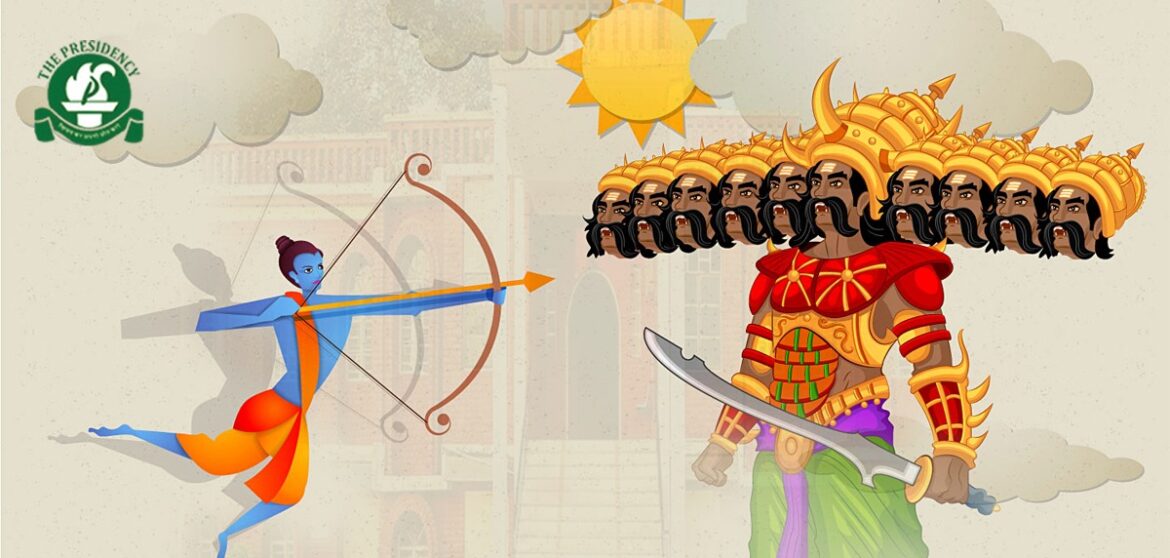THE IMPORTANCE OF DUSSEHRA CELEBRATION IN INDIA
It’s that time of year when anticipation runs high. Festivals are being planned one after the other and preparations are well underway. The month of October generally begins with Navratri and ends with Dussehra. But this year marks the beginning of October with Dussehra.
Dussehra is a major Hindu festival. It is a sacred occasion that represents the triumph of good over evil.
Why is Dussehra Celebrated?
Since India is a place of varied cultures and customs, the Dussehra celebration is commemorated in a variety of ways. The eastern and southern states commemorate Dussehra as the triumph of Goddess Durga over the wicked demon Mahishasura. It starts on the first day of Navratri and lasts nine days.
On the contrary, most northern and western Indian states commemorate Dussehra as Lord Rama’s triumph over Ravana. A long time ago, King Dasharatha wished to crown Rama, his eldest son, as King of Ayodhya. Everyone in the kingdom was overjoyed with the choice and was looking forward to the coronation ceremony.
However, Queen Kaikeyi desired for her son Bharata to be the King of Ayodhya. So, on the eve of the event, she claimed the two boons bestowed to her by King Dasharatha years before. She desired that Rama be exiled in the wilderness for fourteen years and that Bharata be crowned King of Ayodhya.
King Dashratha had no option but to bestow these boons on her. As a result, Lord Rama, his wife Sita and his brother Lakshmana were exiled. They gave up all royal comforts and walked the woodlands for thirteen years.
However, during their last year in exile, the two brothers were approached by Surpanakha, a Rakshasi. The Rakshasi failed to entice the brothers and then attempted to murder Sita. Lakshmana, on the other hand, stopped her and chopped off her ears and nose. Surpanakha, wounded and humiliated, returned to her brother Ravana, the demonic lord of Lanka.
So, in order to avenge his sister’s disgrace, Ravana resolved to abduct Sita. He kidnaped Sita and took her to his country, where he proposes marriage to her. Sita resisted because she loved Lord Rama. Ravana then imprisoned her in the Ashoka Vatika (an orchard).
When Lord Rama and Lakshmana learned of this, they set out to rescue Sita. They encountered Lord Hanuman, a devoted devotee of Lord Rama, on their journey. When Hanuman arrived in Lanka, he met Sita and promised her that Lord Rama would soon come to rescue her.
After Lord Hanuman notified Lord Rama of Sita’s safety, they all traveled to Lanka. A massive fight broke out between Lord Rama’s and Ravana’s armies. He slaughtered the majority of the Lankan army and faced the ten-headed Ravana.
After a lengthy struggle, Lord Rama killed Ravana and was reunited with Sita. When their exile was completed, they all returned to Ayodhya, where Lord Rama was crowned King of Ayodhya.
How Exactly is Dussehra Celebrated?
The tenth day of Navratri is when Dussehra, commonly known as Durga Pooja, is celebrated. The first day of Navratri is devoted to Maa Shailputri, followed by Maa Chandraghanta, Maa Skandmata and the other incarnations of Goddess Durga.
The 10 days leading up to Dussehra are spent celebrating throughout India’s northern, western and central regions. People organize Ramayana-themed dance and theatre plays. RamLeela is the name given to these plays and sketches, which is well known worldwide.
RamLeela tells the complete narrative of Ravana abducting Maa Sita and Lord Rama’s courageous battle against the wicked monarch. On the tenth day or Dussehra, gigantic effigies of Ravana are set on fire, symbolizing Lord Rama’s triumph and reunion with Maa Sita.
The eastern and southern parts of India on the other hand, celebrate Dussehra in an entirely different way. It is celebrated as Durga Pooja, which is also one of the most anticipated Hindu festivals.
While the first nine days of Navratri are devoted to various manifestations of Goddess Durga, the tenth day, also known as Durga Pooja or Dussehra, is an emotional one for devotees. On this day, Goddess Durga’s sculptures are submerged in rivers, seas, or other bodies of water.
After the immersion, Goddess Durga is said to return to Mount Kailash and reunite with Lord Shiva. During the immersion, worshippers chant passionate songs, pray to Goddess Durga and seek her blessings.
The Importance Dussehra
During the nine days preceding Dussehra or Durga Pooja, followers in the eastern states celebrate the nine avatars of Goddess Durga. Each of these nine avatars represents a unique aspect of Goddess Durga. Maa Brahmacharini is considered a symbol of serenity and purity, whereas Maa Kushmanda is revered as the source of all energy in the Universe.
People often love to purchase new automobiles, homes, or other new items on Dussehra. It is considered an auspicious day to begin a new enterprise or business.
Devotees give presents and sweets to their families and friends and believe in enjoying this event with their loved ones. People frequently pray for a fresh start in their life, as well as for forgiveness for any wrongdoings.


